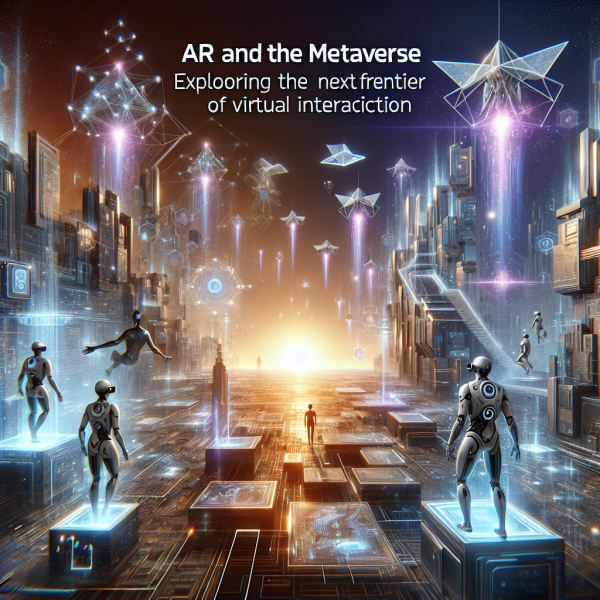Blockchain and IoT: Synergizing Technologies for a Smart, Connected World

In recent years, the Internet of Things (IoT) and blockchain technology have emerged as two of the most transformative forces in the world of technology. While each of these technologies has the potential to revolutionize various industries on its own, the intersection of IoT and blockchain presents an opportunity for unparalleled innovation and efficiency. By integrating these technologies, we can create a secure, transparent, and highly efficient ecosystem that enhances connectivity and enables smarter decision-making in a world increasingly driven by data.
Understanding the Technologies
IoT: The Network of Connected Devices
The Internet of Things refers to a network of interconnected devices that collect and exchange data through the internet. These devices, ranging from smart home appliances to industrial sensors, have the capability to gather real-time information and communicate it over the network. The proliferation of IoT has led to enhanced automation, improved resource management, and a greater understanding of systems and environments across diverse sectors such as agriculture, healthcare, manufacturing, and transportation.
Blockchain: A Decentralized Ledger Technology
Blockchain, on the other hand, is a decentralized digital ledger technology that records transactions across many computers in a way that ensures security, transparency, and immutability. Each transaction is verified by network nodes through cryptography and added to a "block," which is then linked to previous blocks, forming a secure chain of data. This technology is best known for its application in cryptocurrencies like Bitcoin, but its potential applications extend far beyond digital currencies. Blockchain promises to provide secure and tamper-proof data management, making it ideal for industries requiring transparency and traceability.
The Intersection of IoT and Blockchain
The convergence of IoT and blockchain offers several synergistic benefits that can ultimately lead to a more efficient and secure ecosystem. Here are some key advantages of integrating these technologies:
1. Enhanced Security
IoT devices often collect and transmit sensitive data, making them vulnerable to cyberattacks and unauthorized access. By integrating blockchain, the data from IoT devices can be encrypted and stored on a decentralized ledger, making it significantly more difficult for malicious actors to tamper with or hack the system. This enhances the overall security of IoT networks, protecting both data integrity and user privacy.
2. Improved Transparency and Trust
Blockchain provides a transparent and immutable record of transactions and events. When applied to IoT ecosystems, it allows stakeholders to track the origin, movements, and status of assets in real-time. For example, in supply chain management, blockchain technology enables companies to trace products from their source to the end-user, ensuring authenticity and reducing fraud. This increased transparency builds trust among consumers and businesses alike.
3. Efficient Data Management
IoT devices generate massive amounts of data, which can be overwhelming to manage. Blockchain introduces a structured framework for organizing and storing this data, enabling efficient querying, verification, and analysis. This means organizations can derive valuable insights from the data collected by IoT devices without the risk of data manipulation or loss.
4. Automation through Smart Contracts
Smart contracts—self-executing contracts with the terms of the agreement directly written into code—can automate processes within IoT networks. For instance, in an agricultural setting, a smart contract can automatically execute a payment to a farmer once certain conditions are met, such as the delivery of crops or verification of quality through IoT sensors. This reduces the need for intermediaries, streamlining operations and reducing costs.
5. Decentralized Control
Many IoT applications rely on centralized control systems that can become points of failure or targets for hackers. By using blockchain, IoT systems can be designed to operate in a decentralized manner, where no single entity has unilateral control. This improves resilience and reduces the risk of system-wide failures.
Real-World Applications
Several industries are already exploring the integration of blockchain and IoT, leading to groundbreaking applications:
-
Smart Cities: Blockchain can facilitate secure data sharing among various city management systems, improving services such as waste management, traffic control, and public safety through IoT sensors.
-
Supply Chain Management: Companies can track the movement of goods in real-time on a blockchain ledger, ensuring authenticity and optimizing logistics based on IoT data.
-
Healthcare: Patient-monitoring devices can securely transmit health data to clinicians via blockchain, ensuring that patient privacy is maintained while improving the quality of care through real-time data access.
- Energy Management: IoT devices can manage energy consumption in smart grids, while blockchain can facilitate peer-to-peer energy trading, allowing individuals to sell excess energy back to the grid securely.
Conclusion
The convergence of blockchain and IoT represents a significant leap forward in creating a smart, connected world. By enhancing security, improving transparency, streamlining data management, enabling automation through smart contracts, and decentralizing control, these technologies are poised to redefine various industries. As organizations continue to explore and develop these synergistic capabilities, we can expect to see a future marked by greater efficiency, security, and innovation—ultimately leading us toward a more empowered and interconnected global landscape.













